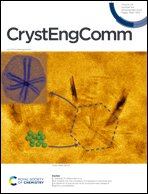An overview of boosting lanthanide upconversion luminescence through chemical methods and physical strategies
Abstract
Lanthanide-doped upconversion nanoparticles have attracted extensive research interest due to their promising applications in various fields. However, conventional upconversion nanoparticles generally suffer from severe quenching effect, leading to extremely weak luminescence that greatly hinders their practical use. To date, great efforts have been made for boosting the upconversion luminescence of these functional nanoparticles through numerous approaches, which can be fundamentally divided into two categories including chemical methods and physical strategies. In this review, a comprehensive survey on the existing approaches for realizing highly enhanced upconversion luminescence is provided. As for the typical chemical methods, chemical composition tuning including suitable selection of host and heavy lanthanide doping, core–shell engineering, ligand modification, dye sensitization, impurity doping and ion exchange are summarized. With respect to the emerging physical strategies, laser excitation modulation that includes the tuning of power density and polarization angle, near-field regulation that involves the exertion of plasmon, photonic crystal and dielectric superlens, heat-associated annealing and inverse thermal quenching as well as the application of external field stimuli like electric field, magnetic field and pressure are overviewed. Current challenges and future opportunities associated with lanthanide-doped upconversion nanoparticles are also discussed in the end.

- This article is part of the themed collection: 2022 Highlight article collection


 Please wait while we load your content...
Please wait while we load your content...